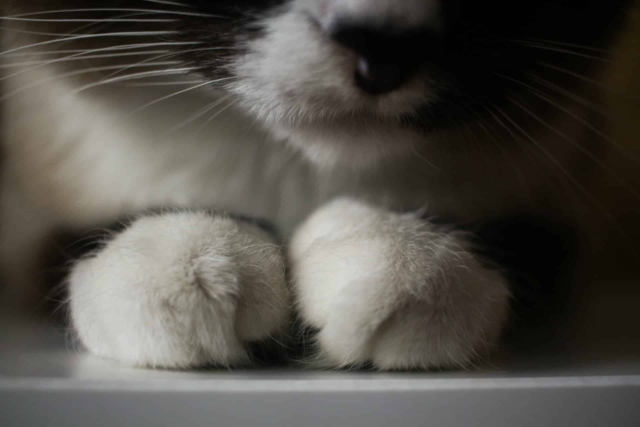
Cat nail trimming is an essential part of pet care that should not be neglected. It helps prevent various problems that can arise from overgrown nails, such as pain, infection, and damage to your furniture and belongings. By regularly trimming your cat’s nails, you can ensure their comfort and well-being while also protecting your home.
Long nails can cause discomfort to your cat when they walk or scratch. Over time, the nails can grow into the paw pads, leading to pain and infection. Additionally, cats with long nails may unintentionally scratch themselves or others, resulting in injuries. Regular nail trimming is crucial in preventing these issues and maintaining your cat’s overall health.
Tools and supplies for cat nail trimming
Before you start trimming your cat’s nails, gather the necessary tools and supplies. You will need a pair of cat nail clippers or a guillotine-style nail trimmer specifically designed for cats. These tools have a curved cutting edge that makes it easier to trim the nails safely.
It is also helpful to have styptic powder or a styptic pencil on hand in case you accidentally cut the quick, which is the sensitive part of the nail that contains blood vessels. These products help stop bleeding quickly and effectively.
How to prepare your cat for nail trimming
Preparing your cat for nail trimming is essential to ensure a stress-free experience for both you and your feline friend. Start by getting your cat accustomed to having their paws touched. Gently touch and massage their paws regularly, offering treats and praise as positive reinforcement.
Introduce the nail clippers to your cat gradually. Let them sniff and inspect the clippers while rewarding them with treats. This will help them associate the clippers with positive experiences.
Create a calm and comfortable environment for the nail trimming session. Choose a quiet room where you can both relax without distractions. Consider playing soothing music or using pheromone sprays to help keep your cat calm.
Step-by-step guide on how to trim your cat’s nails
- Start by gently restraining your cat, ensuring they are comfortable but unable to escape. You can use a towel or enlist the help of a second person to hold your cat securely.
- Take one of your cat’s paws and press on the pad to extend the nails. This will make it easier to see the quick and avoid cutting it.
- Carefully position the clippers around the tip of the nail, making sure to avoid the quick. Trim a small amount of the nail at a time to reduce the risk of cutting too far.
- If you accidentally cut the quick and your cat starts bleeding, apply styptic powder or a styptic pencil to stop the bleeding. Gently hold it against the bleeding nail for a few seconds until the bleeding stops.
- Repeat the process for each nail, taking breaks if needed to keep your cat calm and comfortable.
Common mistakes to avoid during cat nail trimming
While trimming your cat’s nails, it’s important to avoid common mistakes that can lead to discomfort or injuries. One common mistake is cutting the nails too short, which can cause pain and bleeding. Always trim a small amount at a time and be cautious not to cut into the quick.
Another mistake is rushing through the process. Take your time and be patient with your cat. Rushing can lead to anxiety and make the experience stressful for both of you. If your cat becomes anxious or agitated, take a break and try again later.
Lastly, avoid forcefully restraining your cat. Forcing them into a position can cause them to panic or become aggressive. Instead, use gentle restraint techniques or seek assistance from a professional if needed.
Tips for making the nail trimming experience stress-free for your cat
To make the nail trimming experience stress-free for your cat, consider implementing the following tips:
- Gradually introduce nail trimming from a young age to help your cat become familiar with the process.
- Use positive reinforcement, such as treats and praise, to reward your cat during and after the nail trimming session.
- Take breaks if your cat becomes anxious or restless. This will help them relax and prevent the situation from escalating.
- Consider using a scratching post or other scratching surfaces to help naturally wear down your cat’s nails between trimmings.
- If your cat consistently struggles during nail trimming, consult with a veterinarian or a professional groomer for guidance and assistance.
Alternatives to traditional cat nail trimming
While traditional nail trimming is the most common method, there are alternative options available for cat owners. One alternative is providing your cat with scratching posts and other appropriate scratching surfaces. These surfaces can help naturally wear down the nails, reducing the need for frequent trims.
Another option is using nail caps. These soft, rubber caps can be glued onto your cat’s nails to prevent scratching and minimize damage. Nail caps are safe and painless when applied correctly, but they require regular maintenance and replacement.
How often should you trim your cat’s nails?
The frequency of cat nail trimming depends on various factors, including your cat’s lifestyle and individual nail growth rate. On average, most cats benefit from nail trims every two to four weeks. However, some cats may require more frequent trims, while others may need them less often.
Regularly inspect your cat’s nails to determine if they need trimming. If you hear clicking sounds when your cat walks or notice their nails are long and sharp, it’s time for a trim. Remember, it’s better to trim your cat’s nails more frequently than to let them grow too long.
How to handle difficult cats during nail trimming
Handling difficult cats during nail trimming can be a challenge, but with patience and the right approach, it can be done. Here are some tips to help you navigate the process:
- Use calming techniques such as gentle massage or playing soothing music to help relax your cat before starting the nail trimming session.
- If your cat becomes too stressed or anxious, consider using pheromone sprays or diffusers to create a calming environment.
- Gradually desensitize your cat to the nail trimming process by starting with short sessions and gradually increasing the duration over time.
- If necessary, enlist the help of a professional groomer or veterinarian who has experience handling difficult cats.
Remember, never force your cat into a nail trimming session. If your cat consistently refuses or becomes aggressive, consult with a professional for alternative solutions.
Conclusion
Mastering the art of cat nail trimming is essential for every cat owner. By understanding the importance of regular nail trims, preparing your cat for the process, and following a step-by-step guide, you can ensure a stress-free and purrfect experience for both you and your feline companion. Remember to avoid common mistakes, implement stress-reducing techniques, and seek professional help if needed. With patience, practice, and care, you can confidently maintain your cat’s nail health while strengthening the bond between you and your beloved pet.
If you enjoyed my article, I would appreciate you sharing it with your network.

Sima Ndlebe
Sima writes for CatBuzz. He is interested in Cats, Health and Fitness, and Entrepreneurship.
Published: 17 December 2023
Related Articles
Disclaimer
The content found on CatBuzz.org is presented on an "as is" basis and is intended for general consumer information and education purposes only. Any utilization of this information is voluntary and solely at the user's own risk.
None of the articles or content should be regarded as, or used in place of, veterinary medical advice, diagnosis, or treatment. The information provided on the website is purely for educational and informational intentions and should not be considered a substitute for professional guidance from a veterinarian or other qualified expert. The articles are designed to inform consumers about veterinary healthcare and medical matters that may impact their cat's daily life. It should be noted that this website and its services do not constitute the practice of any form of veterinary medical advice, diagnosis, or treatment. CatBuzz.org explicitly disclaims any liability for any direct or indirect damages or losses that may arise from the use of or reliance on the information contained within the content.
Consumers must consult a veterinarian, veterinary specialist, or another qualified veterinary healthcare provider when seeking advice regarding their cat's health or medical conditions. It is important not to ignore, avoid, or postpone seeking medical advice from a veterinarian or other qualified veterinary healthcare provider solely based on information obtained from this website. If you believe that your cat may be experiencing a medical issue or condition, it is imperative to promptly contact a qualified veterinary healthcare professional.



